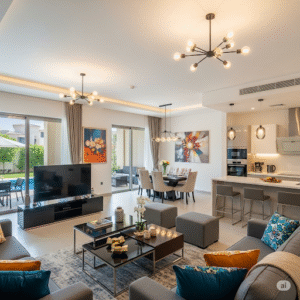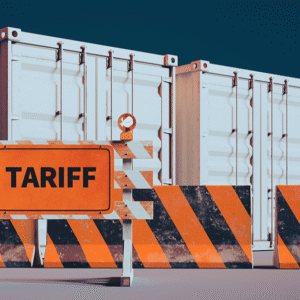Artificial intelligence is playing a growing role in shaping experimental art installations with 3D printing in Dubai. As technology continues to evolve, artists are using AI to explore new creative frontiers. The fusion of AI with 3D printing is transforming how art is designed, developed, and experienced.
This blend of creativity and computation is helping artists in Dubai craft installations that are interactive, intelligent, and deeply immersive. Let’s explore how AI is impacting experimental art in the world of 3D printing across Dubai.
Generating Complex and Organic Designs
Artificial intelligence is helping artists create complex structures for their 3D printed installations. Algorithms can now generate organic forms that are inspired by nature, geometry, or even real-time data. Artists feed input into machine learning models to generate unique design outcomes.
These AI-generated designs are often too complex to be manually created. With the help of AI, artists in Dubai can push the limits of form and structure. The final output is printed using 3D printers to produce installations that feel otherworldly, innovative, and completely original.
Personalizing the Viewer Experience
AI allows installations to respond to the presence of viewers. Motion sensors, facial recognition, and voice detection systems powered by AI help installations react to people in real-time. As someone walks by or speaks, the AI interprets this input and changes the behavior of the artwork.
In Dubai, this technology is being used to make 3D printed installations more interactive and personalized. The art becomes a two-way conversation instead of a one-way display. This personalization creates a deeper emotional connection between the viewer and the installation.
Data-Driven Storytelling in Art
Artists in Dubai are now using AI to interpret large datasets and turn them into visual experiences. For example, an installation might use data from weather patterns, traffic flow, or population movements in Dubai.
AI processes this information and translates it into visual elements like shapes, textures, and movement. The 3D printed parts of the installation are crafted to reflect this data-driven story. This adds depth and meaning to the installation. Viewers not only see a beautiful structure but also gain insight into the systems that shape the city.
Collaborating with Generative Design Tools
Generative design is a technique that uses AI to produce design options based on specific goals or constraints. Artists and designers in Dubai are using generative design tools to explore endless creative possibilities.
They input goals like weight reduction, stability, or aesthetic features. The AI generates a series of optimized forms for them to choose from. These AI-generated designs are then 3D printed to form the foundation of immersive installations. This collaborative process leads to unexpected and innovative outcomes that blend human creativity with machine intelligence.
Simulating and Testing Designs Before Printing
Artificial intelligence also plays a vital role in simulating how a structure will behave before it is printed. AI software can test designs for stability, material efficiency, and stress points. This reduces waste and speeds up the development process.
Artists in Dubai are using these tools to refine their concepts before bringing them to life. By combining simulation with creativity, they can create larger and more ambitious installations without risking collapse or design failure.
Enhancing Installation Movement and Robotics
Some experimental art installations with 3D printing Dubai includes kinetic features. These features may include moving parts, shifting panels, or responsive structures. AI is used to control and adjust the movement based on sensor input or pre-programmed logic.
For example, a structure might open up as someone walks closer, or change shape based on sound levels. This type of movement, driven by AI, brings the installation to life. The structure becomes a dynamic participant in the space, not just a static piece of art.
Real-Time Generative Visuals and Sounds
In immersive environments, visual and audio effects are often powered by AI. Artists are using machine learning to generate light patterns, projections, and sounds that evolve in real-time. These effects respond to environmental input or audience interaction.
The 3D printed structures act as a canvas for these generative visuals. In Dubai, several digital art studios are exploring this kind of AI-driven multimedia layering. The result is a full sensory experience where form, sound, and motion work in harmony.
Reducing Waste and Optimizing Materials
AI is also helping to make experimental installations more sustainable. By analyzing material usage and design structure, AI can help reduce waste during the printing process. Artists use AI to optimize how the material is distributed across the form.
This leads to lighter structures with less printing time and lower environmental impact. Sustainability is becoming more important in Dubai’s art and design scene, and AI is playing a role in supporting those goals.
Democratizing Art Creation Through AI Tools
AI tools are making complex design more accessible to emerging artists. Many platforms now offer user-friendly interfaces where artists can experiment with AI-generated forms. In Dubai, this is helping more people enter the world of experimental 3D printed art.
With less technical training needed, artists can focus on concept and expression. AI takes care of the structural and computational heavy lifting. This democratization is encouraging more diversity and innovation in the scene.
Conclusion
Artificial intelligence is shaping the future of experimental art installations with 3D printing in Dubai. From generating complex designs to enabling responsive interactivity, AI is helping artists unlock new creative dimensions. It enhances how art is made, how it functions, and how it connects with audiences.
In Dubai’s fast-evolving creative landscape, the partnership between AI and 3D printing is more than a trend—it’s a transformation. As both technologies grow, they will continue to inspire a new generation of immersive, intelligent art experiences.




